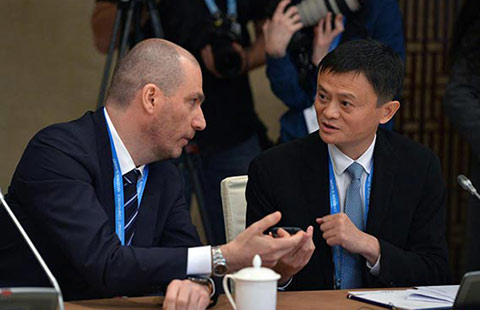China injects new dynamism to Asia-Pacific integration
(Xinhua) Updated: 2015-12-21 13:30SINGAPORE - With the launch of China-Thailand, China-Laos railway projects in December, the agreement to upgrade Free Trade Area (FTA) between China and the Association of Southeast Asian Nations (ASEAN) in November, China's efforts to enhance interconnectivity in Asia-Pacific have yielded fruitful outcomes in 2015, injecting new dynamism to the integration of the region.
Since China's "One Belt and One Road" Initiative in 2013, tangible benefits have come out thanks to the joint efforts of China and related countries.
The initiative, also known as the Silk Road Economic Belt and the 21st Century Maritime Silk Road, aims at promoting trade, investment, services, infrastructure construction as well as people-to-people exchange. The goal of enhancing interconnectivity not only dovetails with the Master Plan on ASEAN Connectivity, but also the APEC Connectivity Blueprint.
Fruits of enhancing interconnectivity
On trade and investment, China and ASEAN sealed an agreement to upgrade FTA during the ASEAN Summit in November. The upgrade helps to realize the target of scaling up two-way trade to $1 trillion by 2020 and promotes the negotiations on the Regional Comprehensive Economic Partnership (RCEP) and the Asia-Pacific Free trade zone.
Alvin Cheng-Hin Lim, research fellow with Longus Institute for Development and Strategy in Singapore, held the view that the successful upgrade of China-ASEAN FTA will be helpful to the negotiations of RECP.
"China and ASEAN's bilateral trade currently stands at $370 billion. The upgrade is a promising sign. RCEP is an FTA on a larger scale and its successful negotiation and ratification will be more challenging," said Lim.
Researchers of East Asian Institute, National University of Singapore also pointed out "China's strategic plan of the 21st Century Maritime Silk Road, The Asian Infrastructure Investment Bank and the Silk Road Fund can benefit ASEAN member states."
During Chinese President Xi Jinping's visit to Singapore in November, China and Singapore announced that the two sides would launch negotiations on upgrading their seven-year-old free trade agreement and the third government-to-government (G2G) project in Chongqing city in southwest China, following the first in Suzhou in east China and the second in Tianjin in north China.
Based on sophisticated interconnections and the modern service economy, the third G2G project in Chongqing will implement the Belt and Road Initiative.
China and Singapore also agreed to explore modes of cooperation between the two countries' enterprises in a third market within the framework of "the Belt and Road" initiative, and work toward the early establishment and operation of the Asian Infrastructure Investment Bank.
On infrastructure construction, the launch of China-Thailand, China-Laos railway projects marks the milestone in stepping up interconnectivity in the Asia-Pacific region.
- Railway co-op with China ushers in new era for Thai infrastructure development
- China's electronics, IT manufacturing industry grows fast
- Chinese visitors drive record boost for New Zealand tourism industry
- HK's IPO fundraising reaches world's highest in 2015
- The great economic malaise continues
- Tricky transitions to manage in 2016
- Silk Road vision for the developing world
- Ford invests $4.5b into electric cars

















